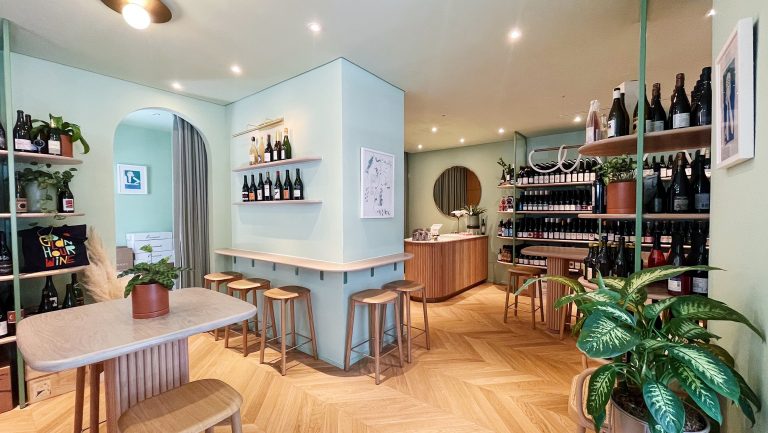Many people in the entertainment industry work in bars and restaurants while trying to land their big break. My career trajectory has been almost the opposite: After film school, I started off as a filmmaker before moving into the restaurant industry. When my longtime friend Nate Tilden asked for help opening a hotel bar and restaurant in Portland, Oregon, where we’re both from, I found myself far more excited about that project than the film industry. So in 2007 we launched Clyde Common, the gastropub and bar located in the Ace Hotel. It was a wild, inspiring, humbling experience that ultimately made me realize I had a real knack for running a bar. Clyde soon became entrenched in Portland’s cocktail scene, so we knew we were doing something right.
A decade later, I’m still at it. I remain co-owner of Clyde with Nate, and I’m co-owner of another popular cocktail bar in Portland, Pépé Le Moko. In New York, I opened The Beagle, which was sold in 2013, and in 2015, The Up & Up, both of which have been named on many “best of” lists, including Esquire’s Best Bars in America. Along the way, I’ve created, tested, and fine-tuned hundreds of cocktail recipes. Here’s what I’ve learned about making them as profitable as possible.
1. Understand the limits of your space and staff.
Take a hard look at the limitations of your physical setup and your staff’s skill level. How many different kinds of glassware and types of ice can you comfortably fit and deal with? Also, consider whether you’ll offer table service or have people ordering from the bar as well—fielding standing guests’ orders while making drinks really slows bartenders down.

Don’t miss the latest drinks industry news and insights. Sign up for our award-winning newsletters and get insider intel, resources, and trends delivered to your inbox every week.
Another critical number is the time it takes for your staff to make a cocktail. To know that, you’ll need to figure out the maximum number of bottle pickups per drink; four is a safe maximum, though some cocktail bars can go all the way up to six or seven. At The Up & Up, people don’t mind waiting 10 to 15 minutes for their drink. But at restaurants, five minutes can be a long time. You have to keep running every kind of calculation and looking for weak spots. An ambitious menu is useless if you can’t maintain quality or get drinks into guests’ hands when they want them.

Do Everything Better
What’s holding you back? Recharge, refresh, and get ready to make 2019 your strongest year yet
2. Maximize sales from your menu.
One of the biggest costs for a bar is unused inventory, and you can minimize that by encouraging guests to order from the menu as much as possible. Drinks that go on the menu undergo a rigorous process—you develop them, cost them, and figure them out, so it’s much easier to know what you’re selling. If you’ve got bartenders doing dealer’s choice all the time, it’s much harder to know what you’re selling, and you don’t know how to improve on those numbers.
When people do order something off menu, pay attention to what they’re asking for and then find a way to put something on the menu that fills that need. Every time we do a menu change, I ask my bartenders what people are ordering. If it’s spicy tequila, we’ll put a spicy tequila drink on the menu. Then I know how much I’m selling and how much the drinks are costing.
3. Get your bartenders thinking like owners.
One easy way to do this is to encourage bartenders to submit drinks for menu consideration. This gives you a chance to work together on the drink creation process and gets them considering things like costing, salability, and achievability. Then they’ll start thinking like this for everything. At The Up & Up, we also note bartenders’ initials next to their drinks. Having their own drink on the menu is a surefire way to impress a customer—and it naturally leads to more on-menu sales.
4. Make sure the most popular drink is also the biggest moneymaker.
Sometimes you just know when you come up with a drink that it will be the one—one of our big sellers is made with Aperol and vanilla-infused bourbon. We knew customers would love it, so we wanted to make sure we’d make money off it. In the drink testing, we infused the bourbon with the vanilla beans in an ISI charger, which is quick but expensive. For actual production we do a slow maceration. It takes a week, but we shaved almost 10 percent off the cost of each drink by doing it that way.
You want to make sure those popular drinks are easy and cost effective. You can also get some brand support behind the drink, which helps if you want to use a pricier spirit. Brands have great PR teams and will give you lots of advertising if you’re moving something in their portfolio. Finally, you’ll be able to get a better deal on large case drops of that spirit, because you know you’ll sell it quickly.
5. Use approachable ingredients to broaden people’s comfort zones.
No one goes to a bar wanting to be confronted with unfamiliar, scary-sounding ingredients. People who are unfamiliar with a spirit or ingredient aren’t likely to order a cocktail made with it. But as cocktail bartenders, we want to sell interesting drinks and broaden people’s horizons. An easy and effective way to solve this is by pairing more obscure spirits with crowd-pleasing ingredients like cucumber, honey, or even jalapeño. We just did this with an aquavit cocktail, pairing the aquavit with lemon, raspberry, and cucumber. People order the drink for those things, not the aquavit. Then they taste it, and they see how much the aquavit gives the drink. Now they’ve found something new without having to work for it. Ingredients like cucumber, vanilla, and sparkling wine are always winners—and right now, anything spicy. And don’t forget that the drink still has to be good.
—As told to Blane Bachelor

Dispatch
Sign up for our award-winning newsletter
Don’t miss the latest drinks industry news and insights—delivered to your inbox every week.
Matt Piacentini is the owner of New York City’s The Up & Up and the co-owner of Portland’s Clyde Common and Pépé Le Moko







